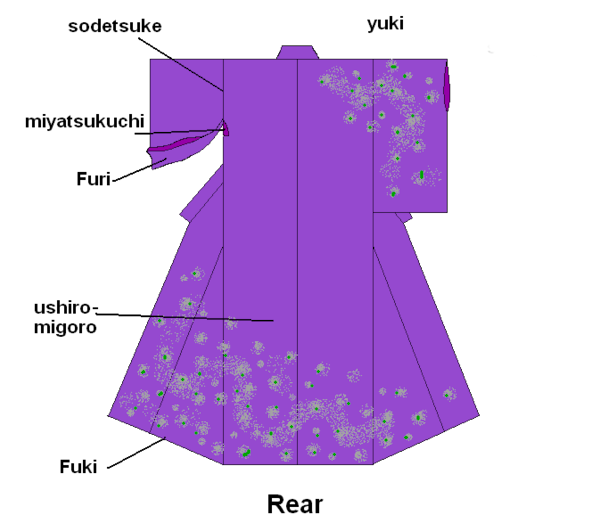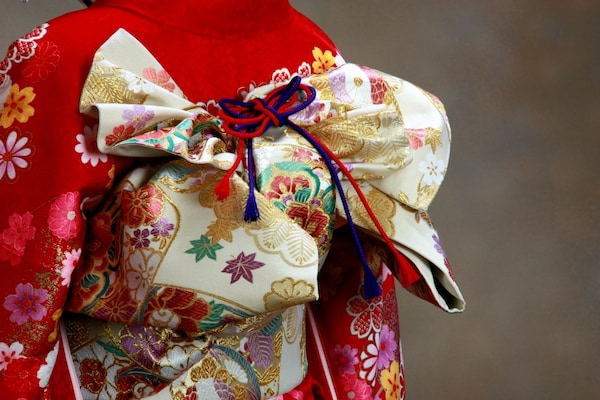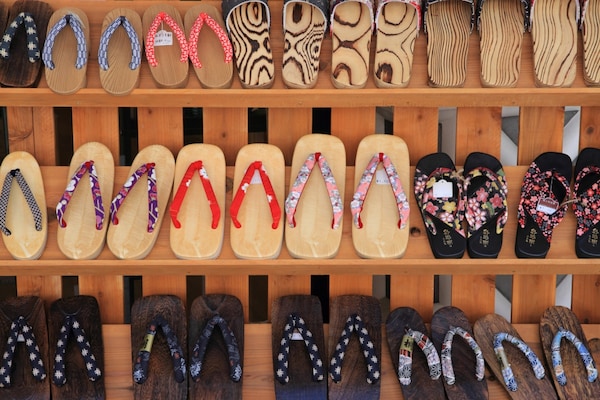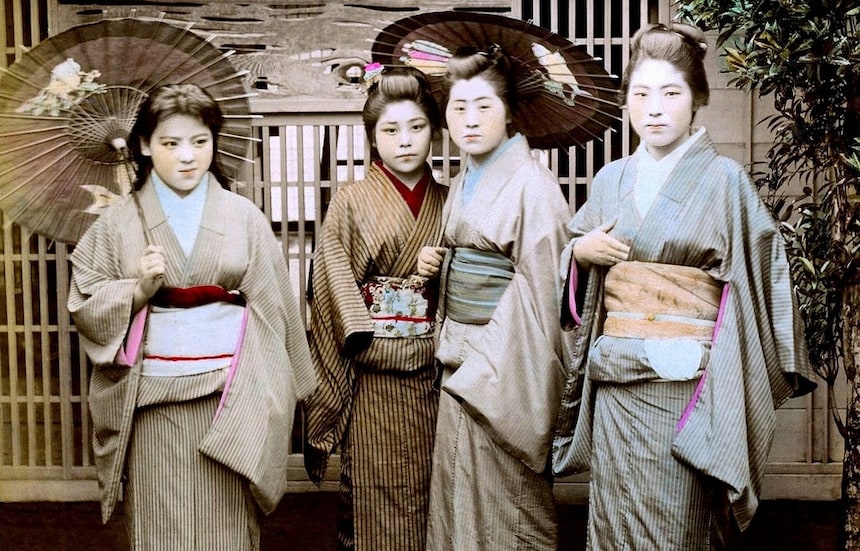Do You Know Your Kimono Parts?
The ubiquitous kimono makes up a very traditional and symbolic fashion of Japan. We always call the full set "kimono," but do you know what to call each specific component? How about the belt that holds it together or the other accessories? If you're intrigued by these classical garments, here is our intro to the parts of a kimono set!

Just about everyone around the world knows the word "kimono," but the idea most people have is that a kimono is a single piece of fabric, or a simple robe. However, kimono (着物, which literally means "wearable thing" in Japanese) often refers to the entire outfit, which is a bit more complicated and has several intricate parts. Let's take a look at those key components.
Kimono Front

https://en.wikipedia.org/wiki/Kimono
Here are the parts of the front of the kimono, going clockwise from top-left:
Sode (袖): The sleeve of the kimono, it's broken down into a few parts, including furi, tamoto, sode-guchi, sode-tsuke, etc. There are also several lengths of sode. According to tradition, younger maidens wear colorful kimono with longer sleeves, called furisode (振袖), while married or older women wear tomesode (留袖), simpler, usually black, kimono with normal-length sleeves.
Sode-guchi (袖口): armhole (lit. sleeve mouth).
Ura-eri (裏襟): inner lining of the collar.
Tomo-eri (共衿): as stains are more likely to occur on the eri, the tomo-eri is a piece of fabric that protects it and can be replaced if damaged, or changed if a different color is desired.
Eri (衿): the collar of the kimono.
Do-ura (胴裏): this inner, unseen lining is simple for female kimono, but often more decorative in men's kimono. The historical context comes from a time when men removed their kimono, at the bathhouse for example, and others could see their wealth based on how detailed the inner lining was.
Okumi (衽 or 袵): gusset, or a panel on the front edge of a kimono added to make the front wider than the back.
Mae-migoro (前身頃): the front panel of the kimono, excluding the sleeves.
Suso-mawashi (裾回し): the lower lining of a kimono, often with an elaborate decoration that can be seen when the okumi opens.
Kimono Back

https://en.wikipedia.org/wiki/Kimono
The backside of a kimono, as labeled clockwise from top-left:
Sode-tsuke (袖付): the inner armhole of the kimono.
Yuki (裄): the measure of distance from the center seam in the back of the kimono to the sleeve's edge.
Fuki (袘): the hem guard at the very bottom of the kimono.
Ushiro-migoro (後身頃): the main back panel and opposite of the mae-migoro (mae means front, ushiro means back).
Furi (振り): the unsewn lower part of the sleeve that can swing (this part can be manipulated by dancers to appear bashful, or by kabuki actors as props).
Tamoto (袂): the pouch inside the furi part of the sleeve, this small space can be used to hold things like a handheld fan.
Miyatsu-kuchi (身八つ口): only on a female kimono, this is the small opening under the sleeve that's used when adjusting how the kimono fits.
Nagajuban

http://item.rakuten.co.jp/kyoetsu-orosiya/juban23/
Nagajuban (長襦袢) is basically the undershirt or slip of the kimono world. Shaped like a kimono, these garments protect the colorful (and often expensive) kimono which are difficult to clean. Therefore, it's necessary to wear an inner garment to protect the kimono from sweat and then wash it as necessary, keeping the kimono clean.
Obi & Koshihimo

After the main fabric of the kimono, let's look at the "belt" that holds the fabric tight. The beautiful outer sash that's highly visible is the obi (帯). The obi hides away any excess fabric and (for women) helps keeps the wearer's waist small and posture straight (similar to a corset). Men's obi are much simpler, thinner and less restrictive. They also come in fewer styles than female obi. Check out some of the other differences between male and female kimono here.
The koshihimo (腰紐), which means "hip ribbon," is a thin piece of fabric that is used to hold the kimono together before tying the more complicated obi. These silk, wool or soft cotton cords are not seen on the outside, but rather are under the obi.
Footwear

The kimono set isn't complete without traditional footwear. Here are the terms you need to know:
Tabi (足袋): traditional split-toe socks, generally in white. Colored tabi do exist, and even ones with patterns, but most formal events and ceremonies require white ones.
Zori (草履): thonged sandal-like shoes that were traditionally made from straw. However, they are also made of fabric, brocade, rubber or vinyl. For women, the formality of the event determines the proper shoe material, as brocade-covered zori are considered the most formal, followed by vinyl and then straw. Again, men have more freedom here, as they can wear imitation straw zori for all occasions, and can even wear them without tabi in informal situations.
Geta (下駄): wooden sandals that seem to fit between clogs and flip-flops. Geta, which are elevated from the ground with wooden supports (or teeth) are more often worn with summer kimono in recent days, with zori taking the more formal role. Maiko, or geisha apprentices, are well-known for wearing a high-wedge version of geta called okobo.




